What Is Brunei Cuisine? A Culinary Introduction opens with the understanding that Bruneian cuisine is shaped by centuries of cultural interaction across the Malay Archipelago. Influenced by Malay, Chinese, and indigenous culinary systems, Bruneian food represents a flavorful synthesis of regional ingredients and traditional techniques. The core of Bruneian cooking lies in its use of aromatic spices, rice, seafood, and coconut-based preparations.
The culinary landscape in Brunei blends indigenous Dayak influences with Islamic food ethics, forming a distinct identity. Brunei’s food culture reflects both heritage and hospitality, using locally sourced ingredients that provide both taste and nutrition. Understanding the foundations of Brunei cuisine reveals the value the country places on simplicity and flavor integration.
The Role of Rice in Brunei Cuisine
A common element that defines What Is Brunei Cuisine? A Culinary Introduction is the dominance of rice as the primary staple. Steamed white rice, known locally as nasi putih, appears in nearly every Bruneian meal. Traditional rice dishes are complemented with proteins, vegetables, and a range of sauces and sambals.
Rice holds cultural meaning, symbolizing sustenance and familial bonding. Dishes such as nasi katok and nasi lemak are examples of Brunei’s rice-based meals that serve both everyday and festive functions. Glutinous rice is also used in snacks and desserts, showcasing the versatility and importance of rice in the Brunei culinary system.
See more: https://tripwordwide.com/flavors-of-brunei/
Traditional Dishes of Brunei
What Is Brunei Cuisine? A Culinary Introduction includes signature dishes like ambuyat, nasi katok, and sup tulang. Ambuyat is a starchy, sticky dish made from sago starch and served with a variety of dipping sauces. Nasi katok is a simple yet flavorful dish composed of rice, deep-fried chicken, and chili sambal.
Sup tulang, a bone soup rich in marrow and infused with local spices, illustrates the depth of flavor found in Bruneian soups. These traditional meals use native ingredients and cooking methods that have been passed down through generations. Traditional dishes are served during both daily meals and community gatherings, reinforcing culinary heritage.
Ambuyat and Cultural Expression
Ambuyat, central to the discussion in What Is Brunei Cuisine? A Culinary Introduction, is more than just a meal. It represents communal eating, shared experience, and cultural pride. Eaten with bamboo sticks called candas, ambuyat is dipped into a variety of savory sauces including binjai and tempoyak, which enhance its otherwise neutral taste.
Ambuyat is prepared during family gatherings and traditional ceremonies, offering insight into Brunei’s cultural values around food and togetherness. The preparation of ambuyat illustrates Brunei’s indigenous heritage, emphasizing respect for natural ingredients like sago and fermented fruit condiments.
The Influence of Halal Practices
What Is Brunei Cuisine? A Culinary Introduction is not complete without recognizing halal food practices. As an Islamic nation, Brunei ensures that all food follows halal standards, which affect how animals are slaughtered, how ingredients are sourced, and how meals are prepared. Halal certification reinforces ethical food consumption.
This religious influence shapes the structure of meals, limiting the use of pork and alcohol while promoting purity in culinary preparation. Every traditional dish is prepared in line with these principles, ensuring Brunei cuisine aligns with both spiritual and health-conscious frameworks.
Importance of Sambal in Bruneian Meals
Sambal plays a pivotal role in What Is Brunei Cuisine? A Culinary Introduction, acting as both a condiment and a flavor enhancer. Made from fresh chilies, garlic, shrimp paste, and lime, sambal is served with almost every Bruneian meal. It complements rice, grilled fish, fried chicken, and vegetable dishes.
Variations of sambal reflect regional preferences and ingredient availability. For instance, sambal tempoyak includes fermented durian, creating a unique blend of spice and sweetness. Sambal serves as a culinary symbol of Brunei’s passion for bold flavors and traditional spice blending techniques.
Bruneian Breakfast Traditions
What Is Brunei Cuisine? A Culinary Introduction also examines local breakfast customs. Popular morning dishes include roti telur, kuih melaya, and nasi lemak. These breakfasts are typically consumed with teh tarik or kopi kampung, traditional milk tea and local-style coffee.

Breakfast in Brunei is both hearty and flavorful, offering a balanced intake of carbohydrates, proteins, and fats. The inclusion of egg, rice, sambal, and bread shows how Brunei adapts traditional elements into meals that cater to energy needs and cultural habits.
Bruneian Street Food and Snacks
Street food is essential in understanding What Is Brunei Cuisine? A Culinary Introduction. Markets and roadside stalls across Brunei offer a variety of snacks such as pulut panggang, curry puffs, and kuih cincin. These snacks use traditional cooking methods and are often sold fresh.
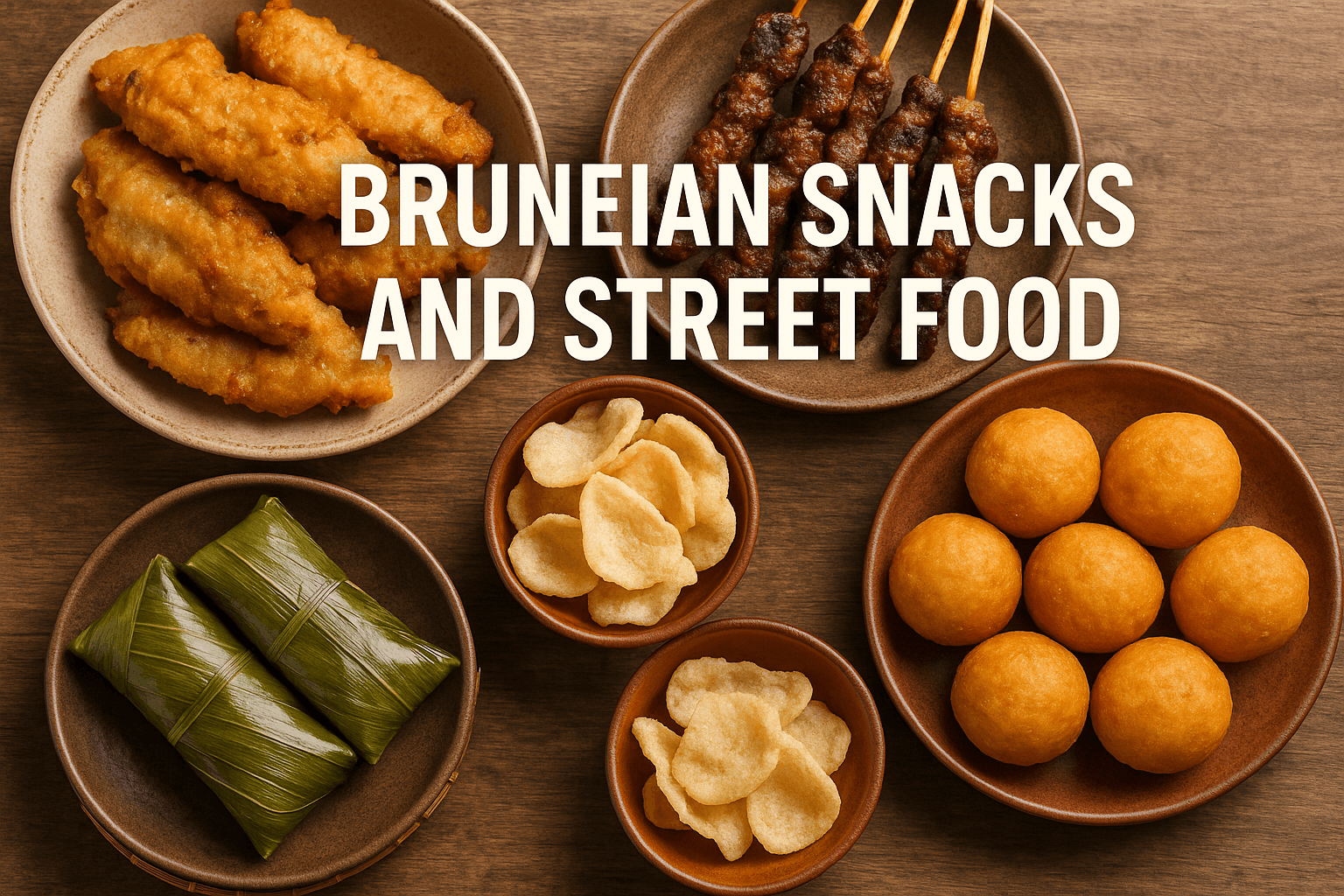
Pulut panggang is grilled glutinous rice filled with spicy shrimp or beef floss, wrapped in banana leaves. Curry puffs contain spicy fillings encased in flaky pastry. These snacks serve not only as quick meals but also as reflections of Brunei’s culinary creativity and local availability of ingredients.
Seafood in Coastal Brunei Cuisine
Given its coastal geography, Brunei enjoys abundant seafood, which is central to What Is Brunei Cuisine? A Culinary Introduction. Popular seafood dishes include ikan bakar, udang lemak, and sotong goreng. Ikan bakar features grilled fish marinated in turmeric and lemongrass, providing robust flavor with minimal ingredients.
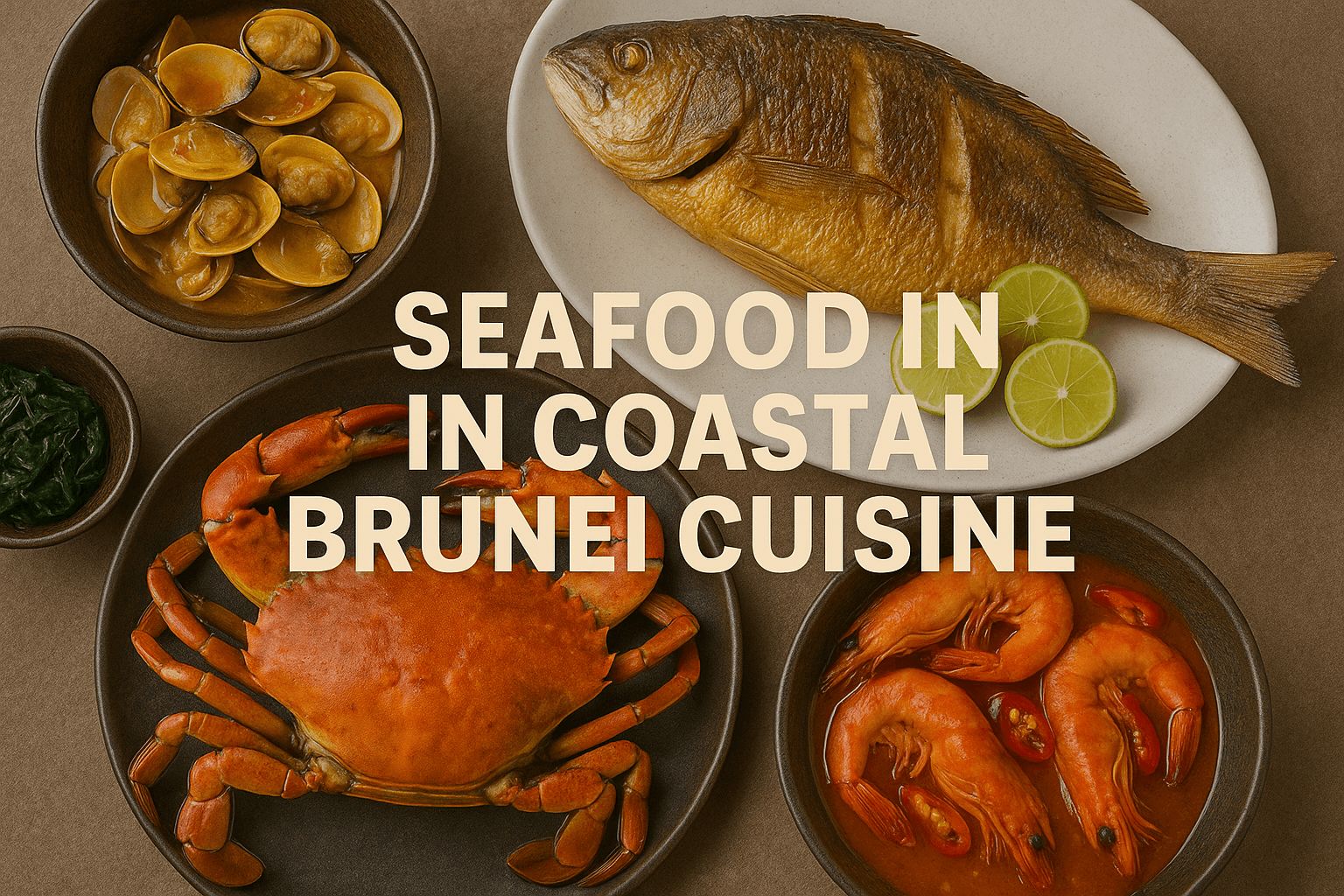
Seafood is often paired with rice and sambal, creating balanced and nutritious meals. Bruneians take pride in using fresh catch from local markets, emphasizing sustainability and food freshness. Coastal culinary habits highlight the relationship between geography and dietary choices.
Traditional Cooking Techniques
To answer What Is Brunei Cuisine? A Culinary Introduction thoroughly, one must understand Brunei’s traditional cooking methods. Techniques such as slow boiling, steaming, grilling, and fermenting are commonly used. Clay pots and bamboo containers enhance flavor and preserve moisture.

Spices are pounded manually using mortar and pestle to maintain natural oils and aromas. These traditional practices preserve the integrity of dishes while enhancing taste and nutritional value. The adherence to manual preparation showcases Brunei’s dedication to culinary craftsmanship.
Indigenous Ingredients and Culinary Roots
The foundation of What Is Brunei Cuisine? A Culinary Introduction includes the use of native herbs and spices. Ingredients like galangal, pandan leaves, turmeric, ginger, lemongrass, and coconut milk are used in both main dishes and desserts. These elements contribute to flavor and health.
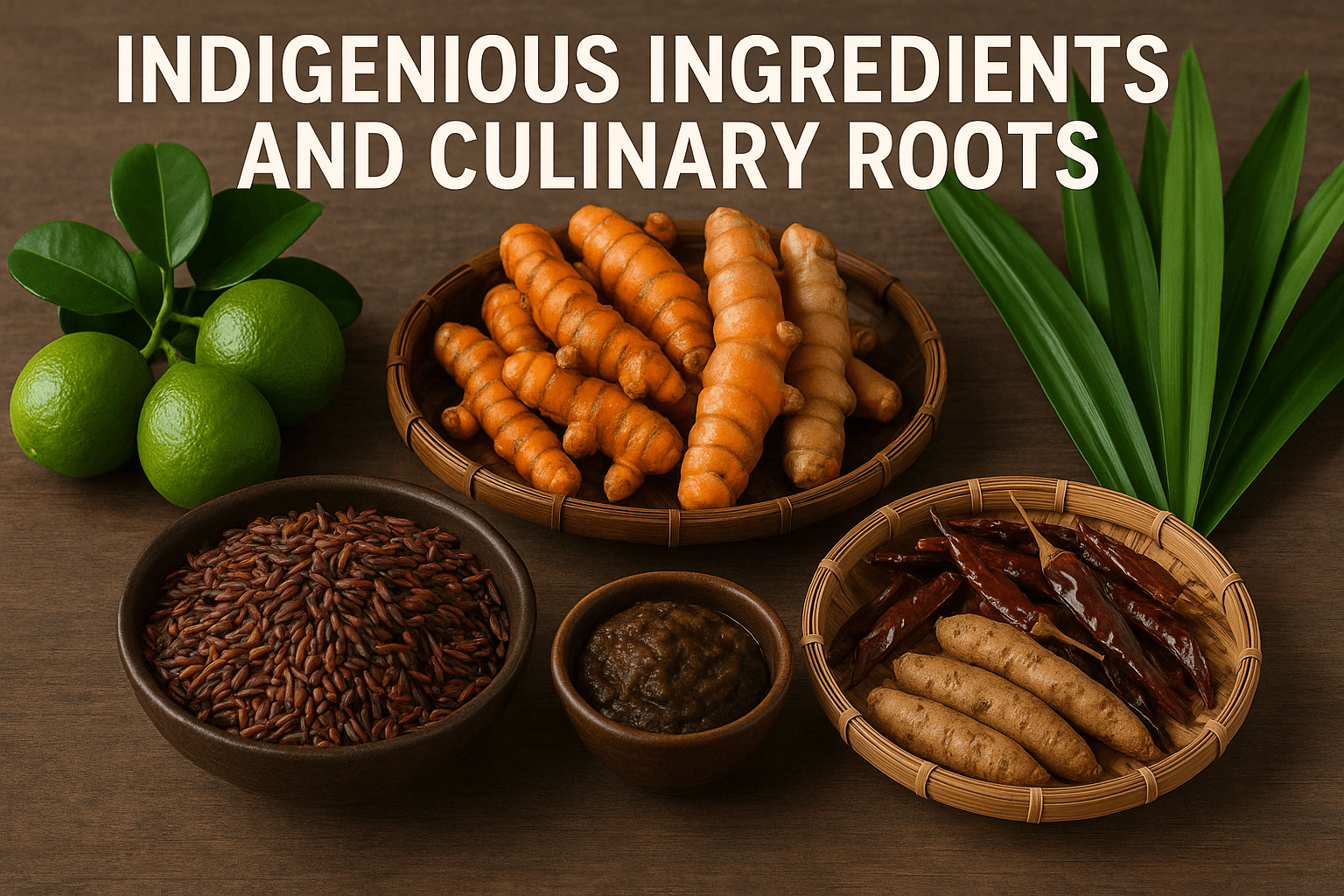
Local produce such as jackfruit, durian, and banana are integrated into multiple recipes. Indigenous ingredients not only flavor the food but also reflect Brunei’s ecological resources and agricultural traditions. Their use reinforces the authenticity and regional identity of Brunei cuisine.
Brunei Desserts and Sweet Treats
Desserts are vital to What Is Brunei Cuisine? A Culinary Introduction. Bruneian sweets include wajid, kuih tapai, and kuih kosui. These desserts use glutinous rice, palm sugar, and coconut milk to create rich textures and naturally sweet flavors.
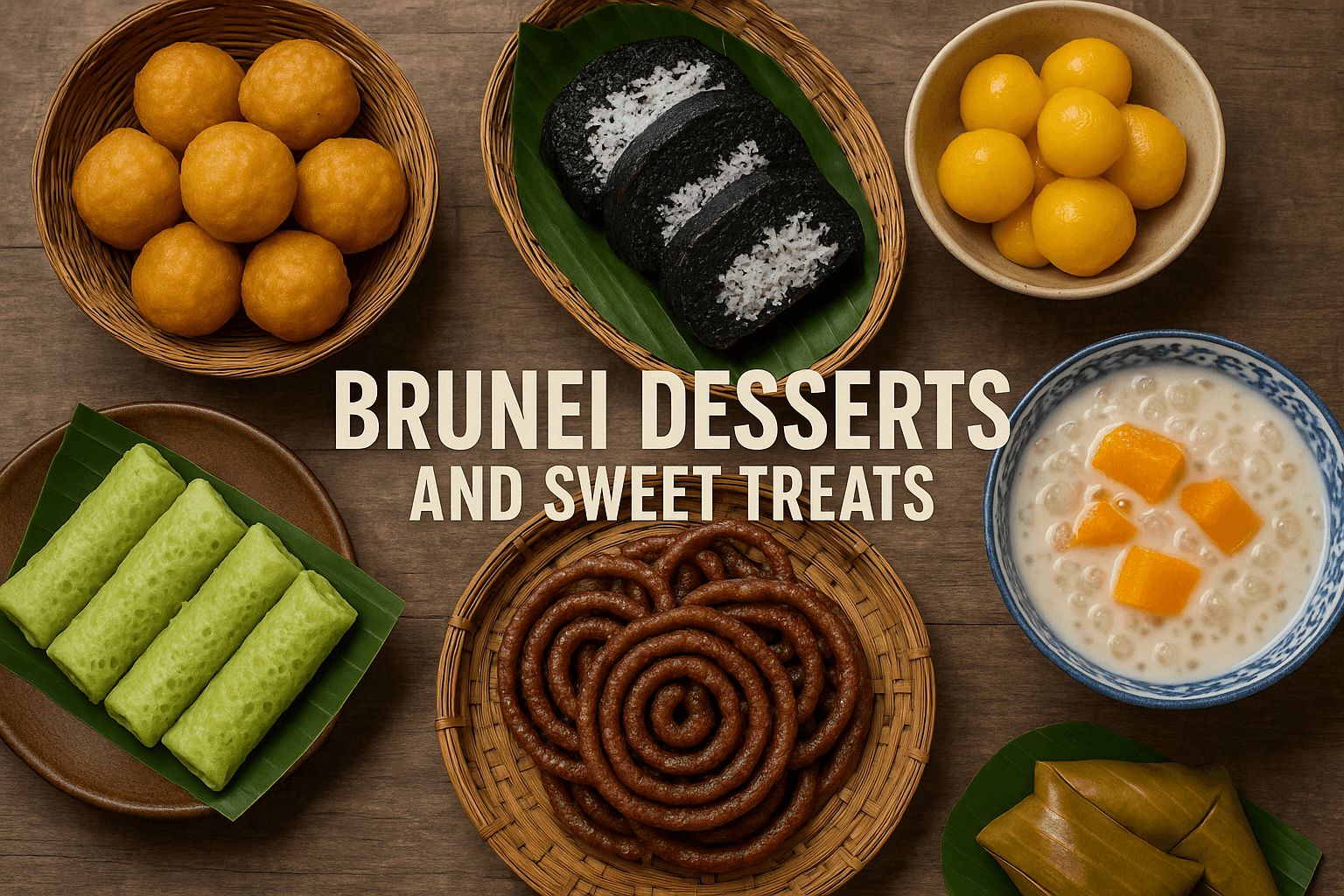
Wajid is sticky rice cooked with palm sugar and wrapped in nyirik leaves. Kuih tapai is fermented rice that develops a sweet, tangy flavor. These treats are commonly served during religious celebrations and family gatherings, reinforcing the cultural significance of dessert in Brunei.
Religious and Festive Culinary Practices
Food plays an integral role in religious events and festivals, a theme that defines What Is Brunei Cuisine? A Culinary Introduction. During Ramadan and Hari Raya, special dishes like beef rendang, satay, and ketupat are prepared. These meals symbolize abundance and gratitude.
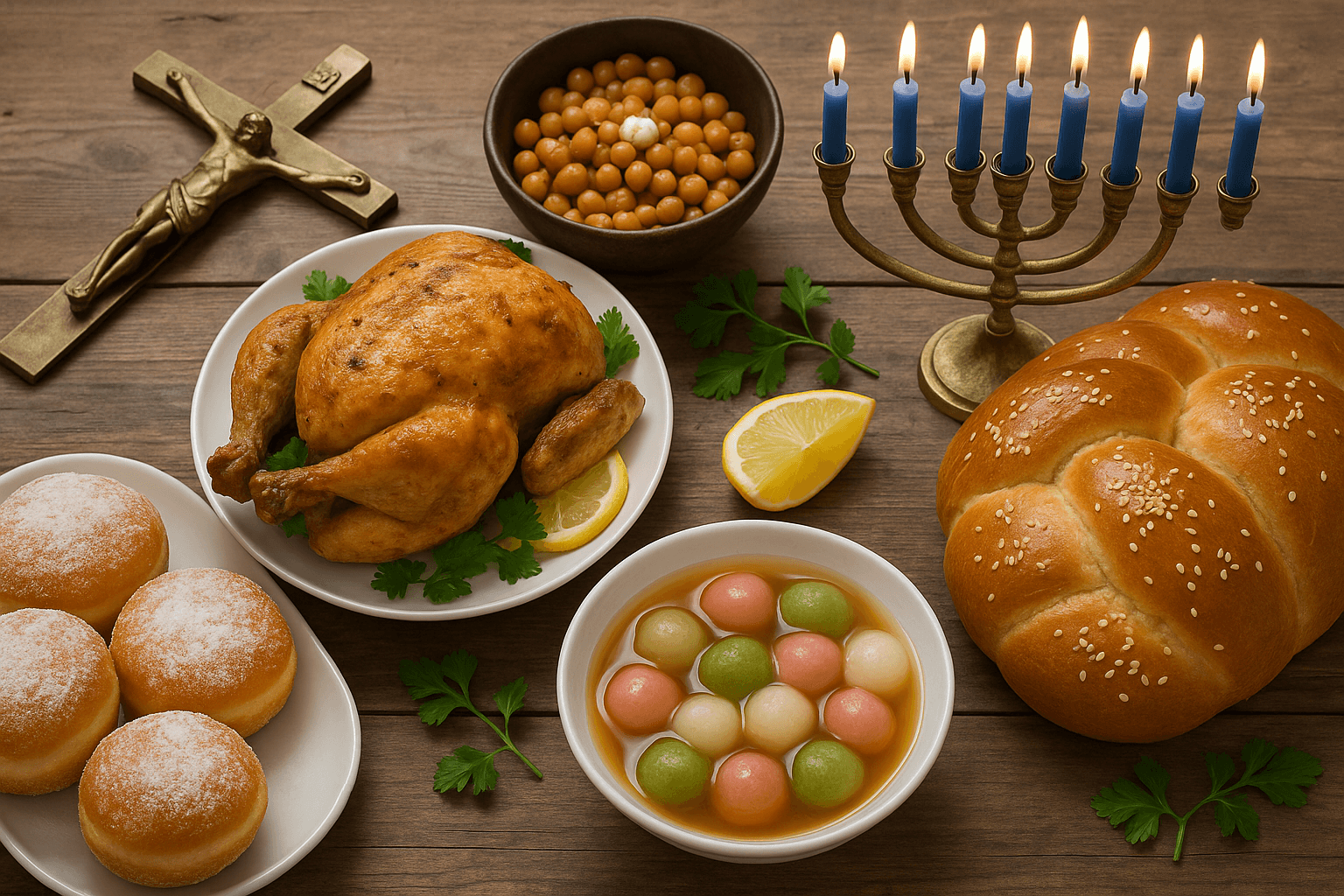
Ceremonial dishes are cooked in large batches and shared among community members. Brunei’s festive cuisine reflects joy, generosity, and social unity. Traditional recipes and cooking rituals are preserved and repeated annually, reinforcing cultural continuity through food.
Beverages in Brunei Cuisine
Local beverages are part of the culinary identity. What Is Brunei Cuisine? A Culinary Introduction includes popular drinks like teh tarik, bandung, and cendol. Teh tarik is a milk tea known for its frothy texture, while bandung is a pink rose-flavored drink made with evaporated milk.
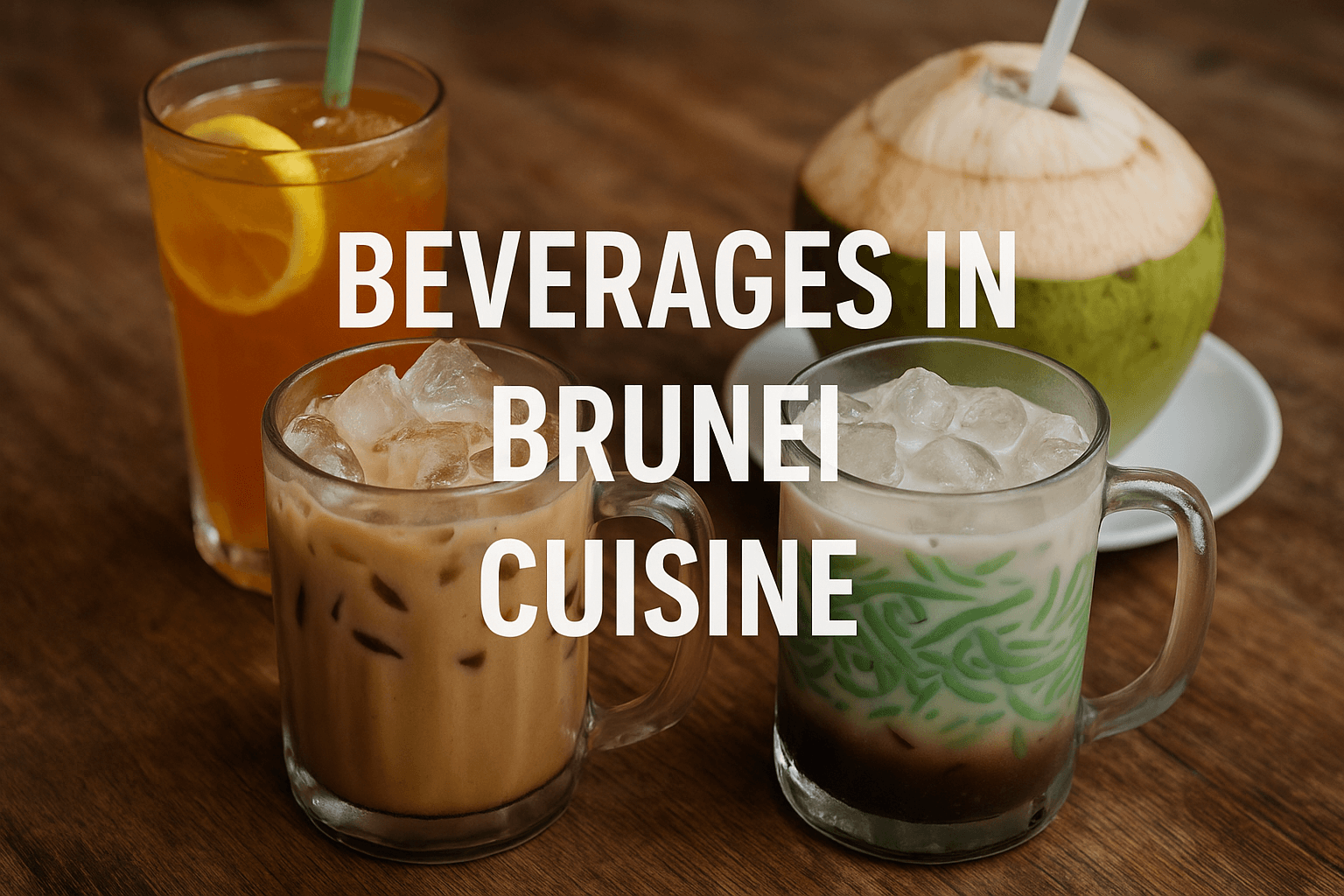
Cendol is a chilled dessert drink containing coconut milk, pandan jelly, and palm sugar. These beverages accompany meals or serve as standalone refreshments, offering relief in Brunei’s tropical climate. Beverage traditions complete the food experience and contribute to cultural richness.
Regional Variations and Diversity
Each region in Brunei has distinct culinary preferences. What Is Brunei Cuisine? A Culinary Introduction recognizes how Brunei-Muara, Temburong, Belait, and Tutong offer different food interpretations. While coastal areas emphasize seafood, interior districts highlight jungle produce and freshwater fish.
Regional recipes include unique spice blends and preparation methods. Diversity in food represents Brunei’s multi-ethnic population and the influence of geographical features. Local food customs vary yet remain unified by shared ingredients and halal practices.
Brunei Cuisine in Modern Times
What Is Brunei Cuisine? A Culinary Introduction has evolved with modernization. Urbanization and globalization have introduced fast food, but traditional meals remain prevalent at home and in local eateries. Bruneian chefs now integrate international techniques with local ingredients.
Fusion dishes such as nasi katok burgers and durian-infused desserts showcase culinary experimentation. Brunei’s food scene balances heritage with innovation, ensuring that younger generations appreciate and preserve their food culture while embracing contemporary influences.
Culinary Education and Preservation
Efforts are underway to teach and preserve Brunei’s food heritage. What Is Brunei Cuisine? A Culinary Introduction notes that culinary schools, community workshops, and cultural exhibitions are promoting traditional food knowledge. Recipes are documented in books and digital archives.
Food festivals and national cooking competitions celebrate Bruneian chefs and home cooks. Preservation initiatives safeguard the intangible cultural heritage linked to cooking methods, food rituals, and local ingredients. Education ensures that the culinary arts remain a vital part of Brunei’s cultural identity.
Sustainable Food Practices in Brunei
Environmental awareness influences food production and consumption. What Is Brunei Cuisine? A Culinary Introduction considers sustainable agriculture, seasonal sourcing, and minimal food waste. Brunei encourages organic farming and supports local fishermen and farmers through community markets.
Packaging reduction and traditional wrapping with banana leaves align with eco-conscious goals. Local governments and NGOs promote sustainable food systems. Brunei’s approach to sustainability reflects both cultural values and modern environmental concerns.
The Role of Community in Bruneian Eating Habits
Communal eating is a major theme in What Is Brunei Cuisine? A Culinary Introduction. Meals are often shared with extended family and neighbors, especially during festivities. Large servings and shared platters reinforce social bonding and community values.
Eating together is a ritual that signifies unity, respect, and cultural coherence. Food is not only nourishment but also a medium of communication and connection. Bruneian meals promote inclusivity and strengthen intergenerational ties through shared culinary experiences.
Conclusion
What Is Brunei Cuisine? A Culinary Introduction offers an in-depth view of the nation’s culinary philosophy, rooted in culture, geography, and tradition. From ambuyat to nasi katok, Bruneian dishes reflect a balance of simplicity, flavor, and spiritual values. Traditional methods, indigenous ingredients, and communal dining define the culinary narrative.
Brunei’s food culture serves as a repository of historical knowledge, environmental awareness, and social values. Understanding Brunei cuisine reveals how deeply food is woven into national identity. As culinary traditions continue to evolve, Brunei preserves the essence of its flavorful heritage while embracing the future of gastronomy.

